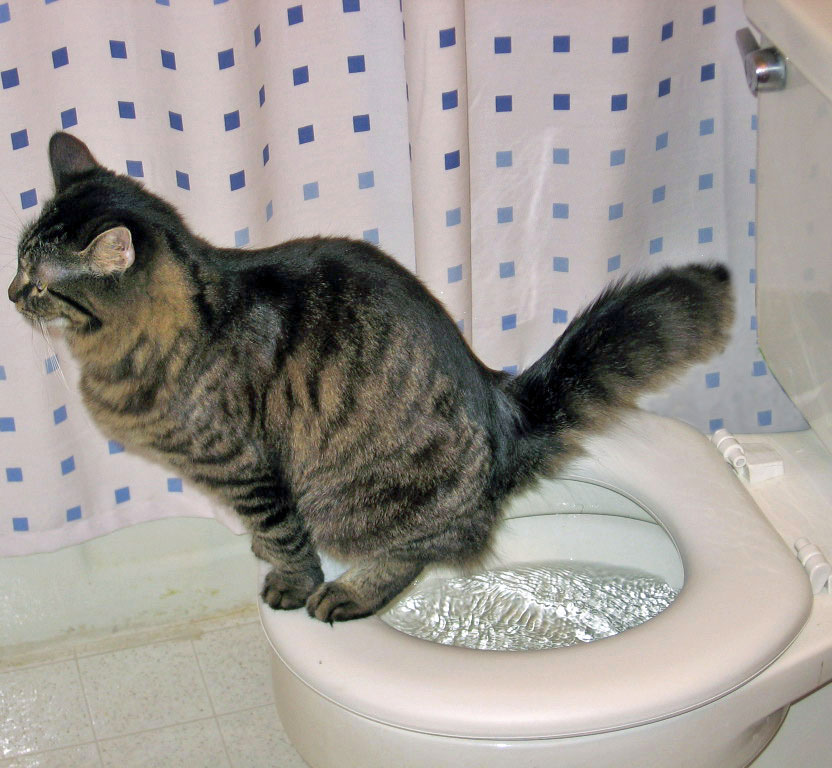Reasons Flushing Cat Poop Down Your Toilet Isn't a Good Idea - Tips for Safer Disposal
Reasons Flushing Cat Poop Down Your Toilet Isn't a Good Idea - Tips for Safer Disposal
Blog Article
Here in the next paragraph yow will discover a bunch of exceptional news when it comes to Can You Flush Cat Poo or Litter Down the Toilet?.

Introduction
As feline proprietors, it's essential to be mindful of exactly how we dispose of our feline buddies' waste. While it may seem practical to purge pet cat poop down the commode, this practice can have detrimental consequences for both the atmosphere and human health and wellness.
Environmental Impact
Flushing feline poop presents harmful pathogens and parasites into the supply of water, presenting a considerable risk to aquatic environments. These pollutants can negatively impact marine life and compromise water quality.
Health Risks
In addition to environmental problems, purging pet cat waste can additionally present health and wellness dangers to people. Cat feces may have Toxoplasma gondii, a parasite that can trigger toxoplasmosis-- a potentially severe illness, specifically for expecting ladies and individuals with weakened immune systems.
Alternatives to Flushing
Fortunately, there are more secure and a lot more responsible means to dispose of pet cat poop. Take into consideration the adhering to options:
1. Scoop and Dispose in Trash
The most common approach of throwing away feline poop is to scoop it into a naturally degradable bag and toss it in the garbage. Make sure to use a dedicated trash scoop and dispose of the waste immediately.
2. Use Biodegradable Litter
Opt for eco-friendly cat litter made from products such as corn or wheat. These trashes are environmentally friendly and can be securely gotten rid of in the trash.
3. Hide in the Yard
If you have a lawn, consider hiding cat waste in a marked area away from veggie gardens and water resources. Be sure to dig deep sufficient to avoid contamination of groundwater.
4. Mount a Pet Waste Disposal System
Invest in an animal waste disposal system particularly made for cat waste. These systems utilize enzymes to break down the waste, reducing odor and ecological effect.
Conclusion
Accountable pet ownership expands beyond supplying food and shelter-- it likewise entails appropriate waste administration. By refraining from purging cat poop down the bathroom and selecting alternate disposal methods, we can decrease our environmental footprint and shield human health.
Why Can’t I Flush Cat Poop?
It Spreads a Parasite
Cats are frequently infected with a parasite called toxoplasma gondii. The parasite causes an infection called toxoplasmosis. It is usually harmless to cats. The parasite only uses cat poop as a host for its eggs. Otherwise, the cat’s immune system usually keeps the infection at low enough levels to maintain its own health. But it does not stop the develop of eggs. These eggs are tiny and surprisingly tough. They may survive for a year before they begin to grow. But that’s the problem.
Our wastewater system is not designed to deal with toxoplasmosis eggs. Instead, most eggs will flush from your toilet into sewers and wastewater management plants. After the sewage is treated for many other harmful things in it, it is typically released into local rivers, lakes, or oceans. Here, the toxoplasmosis eggs can find new hosts, including starfish, crabs, otters, and many other wildlife. For many, this is a significant risk to their health. Toxoplasmosis can also end up infecting water sources that are important for agriculture, which means our deer, pigs, and sheep can get infected too.
Is There Risk to Humans?
There can be a risk to human life from flushing cat poop down the toilet. If you do so, the parasites from your cat’s poop can end up in shellfish, game animals, or livestock. If this meat is then served raw or undercooked, the people who eat it can get sick.
In fact, according to the CDC, 40 million people in the United States are infected with toxoplasma gondii. They get it from exposure to infected seafood, or from some kind of cat poop contamination, like drinking from a stream that is contaminated or touching anything that has come into contact with cat poop. That includes just cleaning a cat litter box.
Most people who get infected with these parasites will not develop any symptoms. However, for pregnant women or for those with compromised immune systems, the parasite can cause severe health problems.
How to Handle Cat Poop
The best way to handle cat poop is actually to clean the box more often. The eggs that the parasite sheds will not become active until one to five days after the cat poops. That means that if you clean daily, you’re much less likely to come into direct contact with infectious eggs.
That said, always dispose of cat poop in the garbage and not down the toilet. Wash your hands before and after you clean the litter box, and bring the bag of poop right outside to your garbage bins.
https://trenchlesssolutionsusa.com/why-cant-i-flush-cat-poop/

Do you really like reading about Don’t flush cat feces down the toilet? Try leaving a remark directly below. We'd be interested to see your suggestions about this post. We are looking forward that you visit us again later on. Enjoyed our blog posting? Please share it. Help somebody else discover it. I am grateful for your time. Visit again soon.
Call Today Report this page